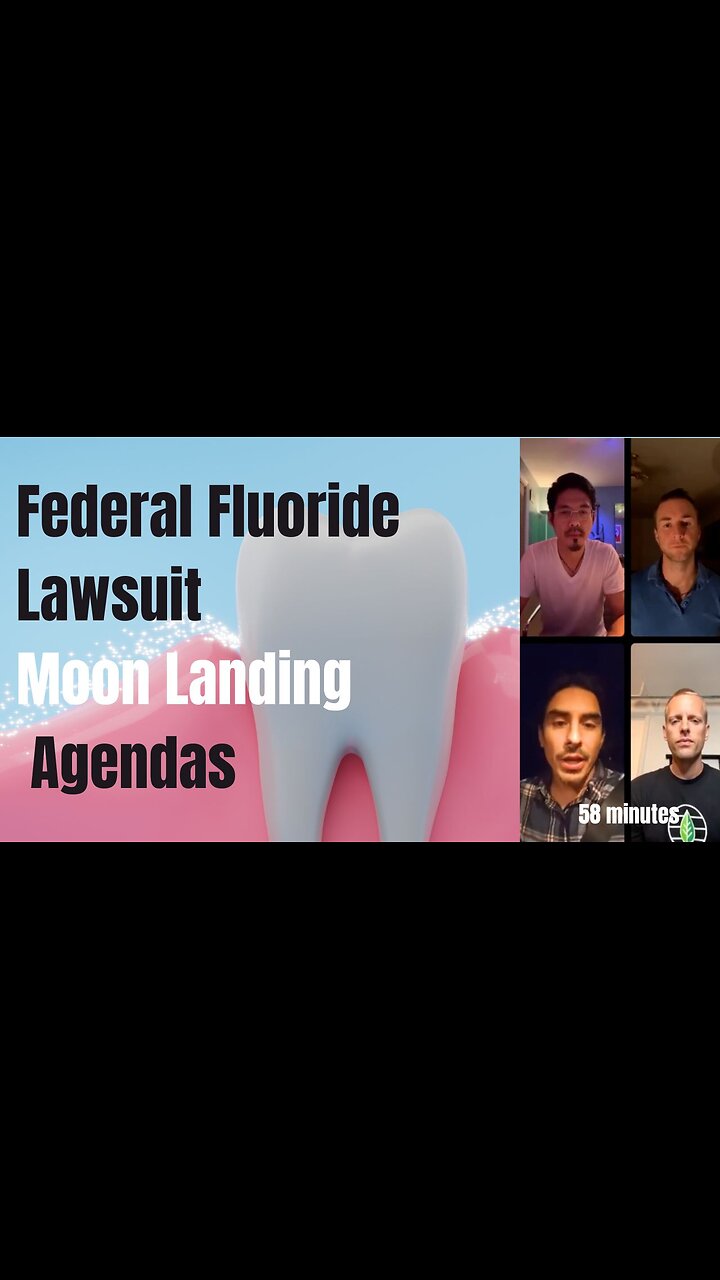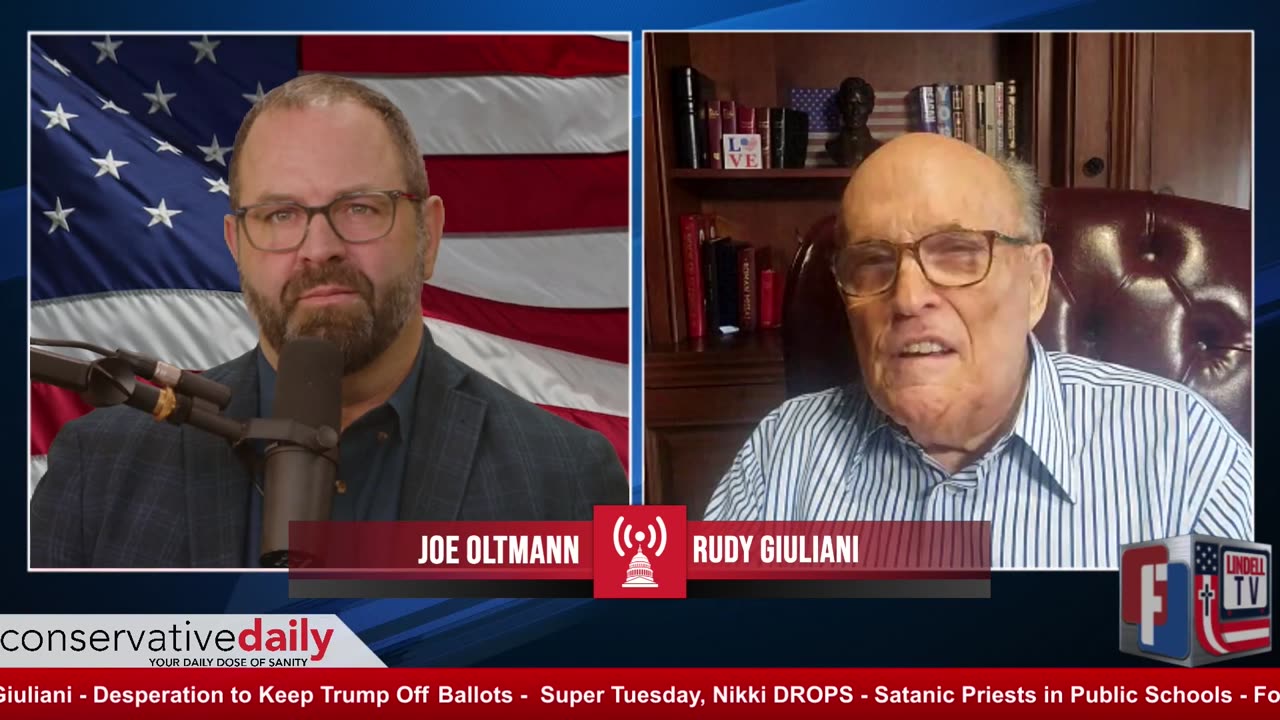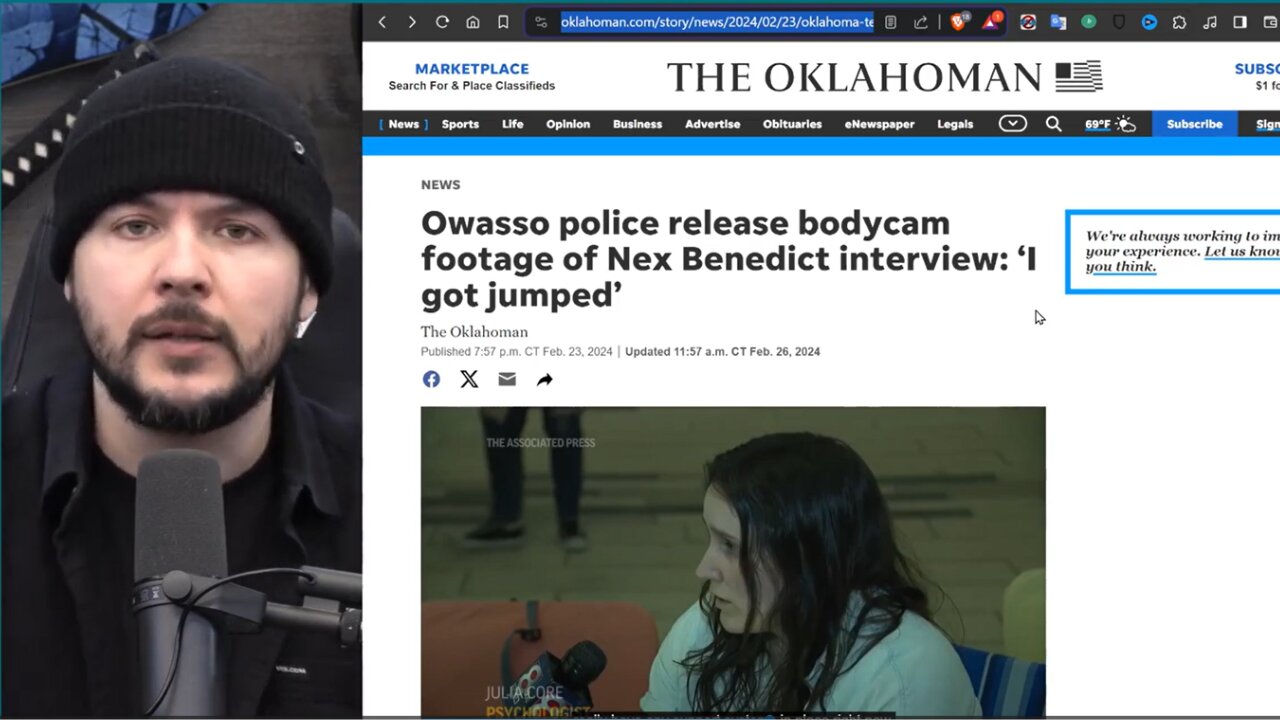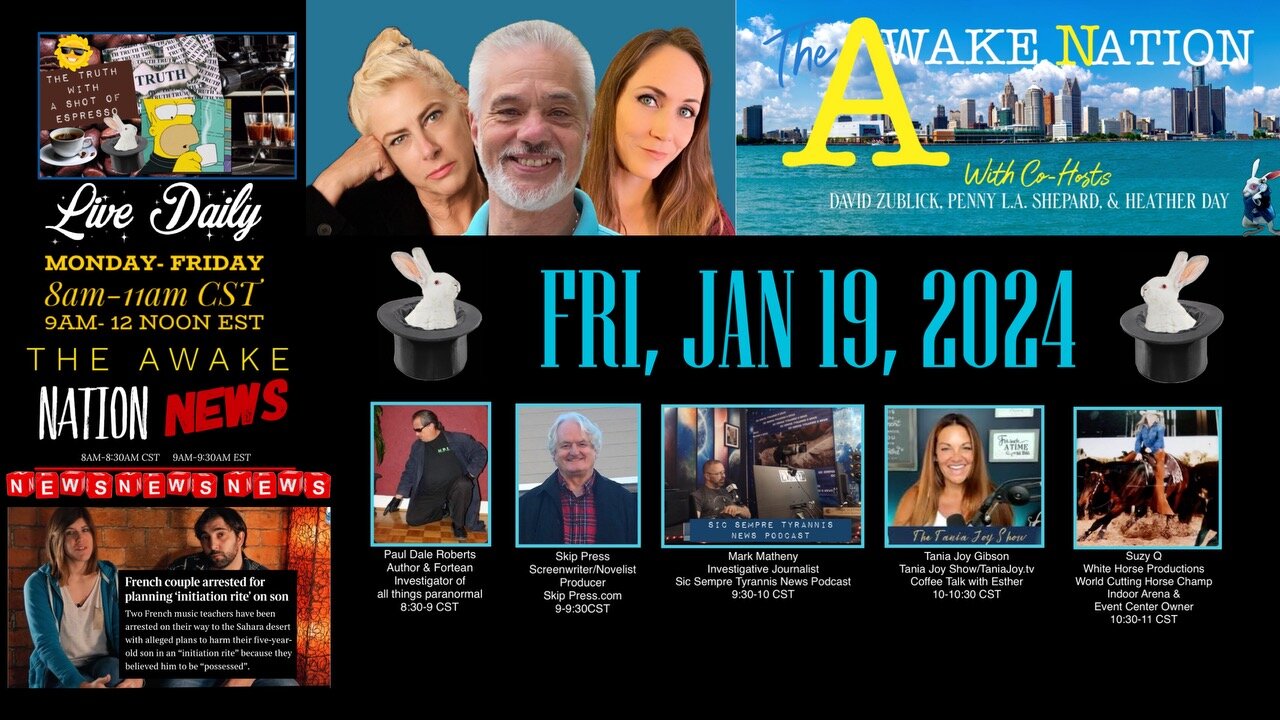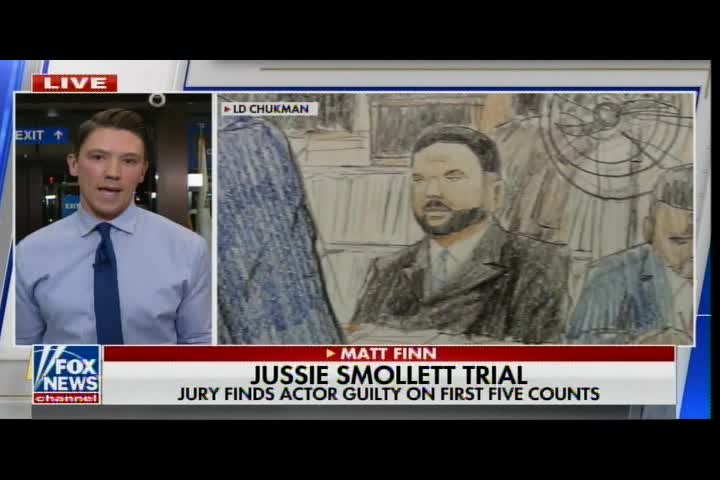Stanley Kubrick Fake Apollo 11 Moon Landing Was A Hoax By The U.S.A. Government
NASA faked the historic Apollo 11 Moon landing footage with the help of Hollywood veteran director Stanley Kubrick, book author and filmmaker Jay Weidner has shockingly claimed. When NASA astronauts Neil Armstrong and Buzz Aldrin landed on the Moon on April 20, 1969, more than 500 million watched around the globe with bated breath. But the monumental moment in the history of mankind is often overshadowed by conspiracy theories claiming the Moon landing was faked. As the 50th anniversary of the Moon landing approaches, the number of conspiracist questioning NASA’s official version of events is on the rise. Mr Weidner, who directed the documentary Kubrick's Odyssey, has astonishingly claimed footage of the Apollo 11 landing was directed by Mr Kubrick. However, even more surprisingly, the filmmaker said NASA did go to the Moon – but the footage broadcast around the world was a hoax.
He said: “Not to say we didn’t go to the Moon, we went to the Moon, we just didn’t go to the Moon and they didn’t show it to us for various reasons, and they’re all very good reasons.”
The Moon Landings Were Faked It's now been nearly four decades since Neil Armstrong took his "giant leap for mankind" — if, that is, he ever set foot off this planet. Doubters say the U.S. government, desperate to beat the Russians in the space race, faked the lunar landings, with Armstrong and Buzz Aldrin acting out their mission on a secret film set, located (depending on the theory) either high in the Hollywood Hills or deep within Area 51. With the photos and videos of the Apollo missions only available through NASA, there's no independent verification that the lunar landings were anything but a hoax.
The smoking gun? Film of Aldrin planting a waving American flag on the moon, which critics say proves that he was not in space. The flag's movement, they say, clearly shows the presence of wind, which is impossible in a vacuum. NASA says Aldrin was twisting the flagpole to get the moon soil, which caused the flag to move. (And never mind that astronauts have brought back hundreds of independently verified moon rocks.) Theorists have even suggested that filmmaker Stanley Kubrick may have helped NASA fake the first lunar landing, given that his 1968 film 2001: A Space Odessey proves that the technology existed back then to artificially create a spacelike set. And as for Virgil I. Grissom, Edward H. White and Roger B. Chaffee — three astronauts who died in a fire while testing equipment for the first moon mission? They were executed by the U.S. government, which feared they were about to disclose the truth.
Far-fetched as the hoax theory may seem, a 1999 Gallup poll showed that it's comparatively durable: 6% of Americans said they thought the lunar landings were fake, and 5% said they were undecided.
According to Mr Weidner, clues about the “controversial” version of events are peppered throughout Mr Kubrick’s films.
He said the Hollywood legend hid “secrets” in his movies, which Mr Kubrick then expected people to pick up on over the next 50 years or so. The conspiracy theorist argued there is no concrete proof astronauts ever went to the Moon.
Instead, he argued Mr Kubrick employed a technique known as front screen projection to shoot the Apollo 11 landing in a Hollywood studio.
Front screen projecting involves creating a detailed backdrop for a filmed scene by projecting an image onto a two-way mirror, which then reflects it onto a highly reflective surface. The technique was pioneered by the cinematographer in his 1966 masterpiece 2001: A Space Odyssey.
Mr Weidner said: “Everybody thinks we went to the Moon, and I think we went to the Moon too, but I don’t think we went the way that they showed us.
“I think that they hired Stanley Kubrick to make the films – all of the Apollo films starting with Apollo 11.
“Then what he did is used the making of 2001: A Space Odyssey as a research and development project to develop the cinema technology needed to do the lunar filming.
“He used the technique called front screen projection and I show how this works in this film and then I show the fingerprints of its usage.
“Certain fingerprints, which are evident every time front screen projection is used, and old antiquated cinematic process now in the age of computers but then a form of cinema trickery, and I show both in the Apollo footage and the Apollo photos the same exact fingerprints.
“In fact, I would say if there’s one thing that Kubrick’s Odyssey is going to do is going to have a historical effect that whether you believe Stanley Kubrick directed the Moon landings or not, after reviewing Kubrick’s Odyssey, I guarantee your view of the Apollo imagery will forever be changed.”
The Apollo 11 Moon landing took place on July 20, 1969, just four days after astronauts Neil Armstrong, Michael Collins and Buzz Aldrin blasted off from Cape Canaveral, Florida.
NASA famously avoids the topic of Moon landing hoax allegations but has in the past firmly denied any claims of foul play.
NASA said: “To some extent debating this subject is an insult to the thousands who worked for years to accomplish the most amazing feats of exploration in history.
Royal Whatsapp
NASA Moon landing HOAX? 'Stanley Kubrick filmed Apollo 11' and THIS is how - Shock claim
NASA faked the historic Apollo 11 Moon landing footage with the help of Hollywood veteran director Stanley Kubrick, book author and filmmaker Jay Weidner has shockingly claimed.
By SEBASTIAN KETTLEY
16:04, Tue, Mar 5, 2019 | UPDATED: 16:06, Tue, Mar 5, 2019
0BOOKMARK
Apollo 11: Gene Kranz gives commands to Armstrong and Aldrin
When NASA astronauts Neil Armstrong and Buzz Aldrin landed on the Moon on April 20, 1969, more than 500 million watched around the globe with bated breath. But the monumental moment in the history of mankind is often overshadowed by conspiracy theories claiming the Moon landing was faked. As the 50th anniversary of the Moon landing approaches, the number of conspiracist questioning NASA’s official version of events is on the rise. Mr Weidner, who directed the documentary Kubrick's Odyssey, has astonishingly claimed footage of the Apollo 11 landing was directed by Mr Kubrick.
RELATED ARTICLES
NASA Moon landing SHOCK: Apollo 14 Moon rock sample is from EARTH
NASA Moon landing: When is NASA going back to the Moon?
However, even more surprisingly, the filmmaker said NASA did go to the Moon – but the footage broadcast around the world was a hoax.
He said: “Not to say we didn’t go to the Moon, we went to the Moon, we just didn’t go to the Moon and they didn’t show it to us for various reasons, and they’re all very good reasons.”
According to Mr Weidner, clues about the “controversial” version of events are peppered throughout Mr Kubrick’s films.
He said the Hollywood legend hid “secrets” in his movies, which Mr Kubrick then expected people to pick up on over the next 50 years or so.
READ MORE: Shock claim Nostradamus predicted Apollo 11 coverup
NASA Moon landing hoax: Stanley Kubrick
NASA Moon landing: Conspiracists believe Stanley Kubrick filmed the Apollo Moon landings (Image: NASA/GETTY)
NASA Moon landing: Apollo 11 on the Moon
NASA Moon landing: Apollo 11 was the fist mission to touch down on the Moon (Image: NASA)
The conspiracy theorist argued there is no concrete proof astronauts ever went to the Moon.
Instead, he argued Mr Kubrick employed a technique known as front screen projection to shoot the Apollo 11 landing in a Hollywood studio.
Front screen projecting involves creating a detailed backdrop for a filmed scene by projecting an image onto a two-way mirror, which then reflects it onto a highly reflective surface.
The technique was pioneered by the cinematographer in his 1966 masterpiece 2001: A Space Odyssey.
READ MORE: SHOCK claim footprint does not match Neil Armstrong's boot
Enter your email address here
SUBSCRIBE
We use your sign-up to provide content in ways you've consented to and to improve our understanding of you. This may include adverts from us and 3rd parties based on our understanding. You can unsubscribe at any time. More info
RELATED ARTICLES
Was the moon landing FAKED? David Meade weighs in on NASA hoax claims
Moon landing SHOCK: NASA tapes lost in 1970s expose lunar SECRET
Mr Weidner said: “Everybody thinks we went to the Moon, and I think we went to the Moon too, but I don’t think we went the way that they showed us.
“I think that they hired Stanley Kubrick to make the films – all of the Apollo films starting with Apollo 11.
“Then what he did is used the making of 2001: A Space Odyssey as a research and development project to develop the cinema technology needed to do the lunar filming.
“He used the technique called front screen projection and I show how this works in this film and then I show the fingerprints of its usage.
READ MORE: Does 'stagehand reflected in astronaut's' visor prove it was filmed in a studio?
NASA Moon landing: Apollo 11 on the Moon
NASA Moon landing: These incredible photos were snapped by the Apollo 11 crew on the Moon (Image: NASA)
NASA Moon landing hoax: Stanley Kubrick
NASA Moon landing: Jay Weidner said Stanley Kubrick directed the lunar hoax (Image: GETTY)
“Certain fingerprints, which are evident every time front screen projection is used, and old antiquated cinematic process now in the age of computers but then a form of cinema trickery, and I show both in the Apollo footage and the Apollo photos the same exact fingerprints.
They hired Stanley Kubrick to make the films
Jay Weidner, book author
“In fact, I would say if there’s one thing that Kubrick’s Odyssey is going to do is going to have a historical effect that whether you believe Stanley Kubrick directed the Moon landings or not, after reviewing Kubrick’s Odyssey, I guarantee your view of the Apollo imagery will forever be changed.”
The Apollo 11 Moon landing took place on July 20, 1969, just four days after astronauts Neil Armstrong, Michael Collins and Buzz Aldrin blasted off from Cape Canaveral, Florida.
NASA famously avoids the topic of Moon landing hoax allegations but has in the past firmly denied any claims of foul play.
NASA said: “To some extent debating this subject is an insult to the thousands who worked for years to accomplish the most amazing feats of exploration in history.
Apollo 11: Buzz Aldrin makes joke about the Earth's surface
“And it certainly is an insult to the memory of those who have given their lives for the exploration of space.”
The three NASA astronauts who flew to the Moon were awarded the Presidential Medal of Freedom.
Their incredible endeavor is now the subject of the documentary Apollo 11, which is out now. Commander Armstrong, the first man to walk on the Moon, died in 2012 at the age of 82.
When is NASA going back to the Moon?
NASA administrator Jim Bridenstine has vowed to return to the Moon “as soon as possible” as NASA sets its sights on the lunar orb and Mars.
In February, the NASA chief announced the US space agency’s renewed drive to reinvigorate NASA’s commitment towards lunar exploration.
As part of this renewed interest in the Moon, NASA aims to send robotic landers by the year 2024, followed by human crews no later than 2028.
He said: “It’s important that we get back to the Moon as soon as possible.
“This time when we go to the Moon, we’re actually going to stay. “We’re not going to leave flags and footprints and then come home and not go back for another 50 years.”
How Stanley Kubrick Staged the Moon Landing Have you ever met a person who’s been on the moon? There are only four of them left. Within a decade or so, the last will be dead and that astonishing feat will pass from living memory into history, which, sooner or later, is always questioned and turned into fable. It will not be exactly like the moment the last conquistador died, but will lean in that direction. The story of the moon landing will become a little harder to believe.
I’ve met three of the twelve men who walked on the moon. They had one important thing in common when I looked into their eyes: they were all bonkers. Buzz Aldrin, who was the second off the ladder during the first landing on July 20, 1969, almost exactly fifty years ago—he must have stared with envy at Neil Armstrong’s crinkly space-suit ass all the way down—has run hot from the moment he returned to earth. When questioned about the reality of the landing—he was asked to swear to it on a Bible—he slugged the questioner. When I sat down with Edgar Mitchell, who made his landing in the winter of 1971, he had that same look in his eyes. I asked about the space program, but he talked only about UFOs. He said he’d been wrapped in a warm consciousness his entire time in space. Many astronauts came back with a belief in alien life.
Maybe it was simply the truth: maybe they had been touched by something. Or maybe the experience of going to the moon—standing and walking and driving that buggy and hitting that weightless golf ball—would make anyone crazy. It’s a radical shift in perspective, to see the earth from the outside, fragile and small, a rock in a sea of nothing. It wasn’t just the astronauts: everyone who saw the images and watched the broadcast got a little dizzy.
July 20 1969, 3:17 P.M. E.S.T. The moment is an unacknowledged hinge in human history, unacknowledged because it seemed to lead nowhere. Where are the moon hotels and moon amusement parks and moon shuttles we grew up expecting? But it did lead to something: a new kind of mind. It’s not the birth of the space age we should be acknowledging on this fiftieth anniversary, but the birth of the paranoia that defines us. Because a man on the moon was too fantastic to accept, some people just didn’t accept it, or deal with its implications—that sea of darkness. Instead, they tried to prove it never happened, convince themselves it had all been faked. Having learned the habit of conspiracy spotting, these same people came to question everything else, too. History itself began to read like a fraud, a book filled with lies. To understand America, you can start with Apollo 11 and all that is counterfactual that’s grown around it; that’s when the culture of conspiracy, which is the culture of Donald Trump and fake news, was born.
The stories of a hoax predate the landing itself. As soon as the first capsules were in orbit, some began to dismiss the images as phony and the testimony of the astronauts as bullshit. The motivation seemed obvious: John F. Kennedy had promised to send a man to the moon within the decade. And, though we might be years behind the Soviets in rocketry, we were years ahead in filmmaking. If we couldn’t beat them to moon, we could at least make it look like we had.
Most of the theories originated in the cortex of a single man: William Kaysing, who’d worked as a technical writer for Rocketdyne, a company that made engines. Kaysing left Rocketdyne in 1963, but remained fixated on the space program and its goal, which was often expressed as an item on a Cold War to-do list—go to the moon: check—but was in fact profound, powerful, surreal. A man on the moon would mean the dawn of a new era. Kaysing believed it unattainable, beyond the reach of existing technology. He cited his experience at Rocketdyne, but, one could say he did not believe it simply because it was not believable. That’s the lens he brought to every NASA update. He was not watching for what had happened, but trying to figure out how it had been staged.
There were six successful manned missions to the moon, all part of Apollo. A dozen men walked the lunar surface between 1969 and 1972, when Harrison H. Schmitt—he later served as a Republican U.S. Senator from New Mexico—piloted the last lander off the surface. When people dismiss the project as a failure—we never went back because there is nothing for us there—others point out the fact that twenty-seven years passed between Columbus’s first Atlantic crossing and Cortez’s conquest of Mexico, or that 127 years passed between the first European visit to the Mississippi River and the second—it’d been “discovered,” “forgotten,” and “discovered” again. From some point in the future, our time, with its celebrities, politicians, its happiness and pain, might look like little more than an interregnum, the moment between the first landing and the colonization of space.
Kaysing put his theories in a book, self-published in 1976. His title is also his conclusion: We Never Went to the Moon: America’s Thirty Billion Dollar Swindle. He believed he was playing whistle-blower, calling attention to a cover-up. The human mind has evolved to see patterns. You see a face in the clouds, hear God in the wind. Some people spot a cabal where others see nothing but bureaucrats. It’s not because they are stupid; it’s because they are smart. The same skill that would have made them a success in one age makes them a kook in another.
Kaysing catalogued inconsistencies that “proved” the landing had been faked. There have been hundreds of movies, books, and articles that question the Apollo missions; almost all of them have relied on Kaysing’s “discoveries.”
Old Glory: The American flag the astronauts planted on the moon, which should have been flaccid, the moon existing in a vacuum, is taut in photos, even waving, reveling more than NASA intended. (Knowing the flag would be flaccid, and believing a flaccid flag was no way to declare victory, engineers fitted the pole with a cross beam on which to hang the flag; if it looks like its waving, that’s because Buzz Aldrin was twisting the pole, screwing it into the lunar soil).
There’s only one source of light on the moon—the sun—yet the shadows of the astronauts fall every which way, suggesting multiple light sources, just the sort you might find in a movie studio. (There were indeed multiple sources of light during the landings—it came from the sun, it came from the earth, it came from the lander, and it came from the astronauts’ space suits.)
Blast Circle: If NASA had actually landed a craft on the moon, it would have left an impression and markings where the jets fired during takeoff. Yet, as can be seen in NASA’s own photos, there are none. You know what would’ve left no impression? A movie prop. Conspiracy theorists point out what looks like a C written on one of the moon rocks, as if it came straight from the special effects department. (The moon has about one-fifth the gravity of earth; the landing was therefore soft; the lander drifted down like a leaf. Nor was much propulsion needed to send the lander back into orbit. It left no impression just as you leave no impression when you touch the bottom of a pool; what looks like a C is probably a shadow.)
Here you are, supposedly in outer space, yet we see no stars in the pictures. You know where else you wouldn’t see stars? A movie set. (The moon walks were made during the lunar morning—Columbus went ashore in daylight, too. You don’t see stars when the sun is out, nor at night in a light-filled place, like a stadium or a landing zone).
Giant Leap for Mankind: If Neil Armstrong was the first man on the moon, then who was filming him go down the ladder? (A camera had been mounted to the side of the lunar module).
Kaysing’s alternate theory was elaborate. He believed the astronauts had been removed from the ship moments before takeoff, flown to Nevada, where, a few days later, they broadcast the moon walk from the desert. People claimed to have seen Armstrong walking through a hotel lobby, a show girl on each arm. Aldrin was playing the slots. They were then flown to Hawaii and put back inside the capsule after the splash down but before the cameras arrived. This scenario was turned into Capricorn One, probably the best acting work of O.J. Simpson’s career. In that movie, which did as much as Kaysing to spread doubt, the capsule burns up on reentry, leaving NASA with no choice: they must kill the astronauts. O.J. escapes, runs across the desert, and shows up at his own funeral. This twist was said to echo another aspect of the conspiracy, the most chilling. Some attributed the fire that tore through the rehearsal capsule during preparations for Apollo 1, killing three astronauts—Gus Grissom, Edward White II, Roger Chaffee—was really part of a cover-up, a way to silence men who were about to go public.
At any other time, such theories would have been dismissed as a madman’s raving, but America was willing to doubt in the seventies. That’s when the dream faded, when everything we’d been told began to sound like a fairy tale. American history itself was questioned, rewritten. Were we in fact the good guys at Plymouth Rock? How was the West really won? It was all recast in the afterglow of the Vietnam War, which was escalated with lies, and Watergate, when the president operated in the way of Don Vito Corleone. In other words, the space program, which began in one era, the buzz-cut age of American exceptionalism, culminated in another. There was a new sensibility. We were all becoming conspiracy theorists, trained to see behind the screen, spot the hoax, suspect everything. That cynicism is the only thing many Americans still have in common. It used to be baseball; now it’s the certainty that we’re being tricked.
Of all the fables that have grown up around the moon landing, my favorite is the one about Stanley Kubrick, because it demonstrates the use of a good counternarrative. It seemingly came from nowhere, or gave birth to itself simply because it made sense. (Finding the source of such a story is like finding the source of a joke you’ve been hearing your entire life.) It started with a simple question: Who, in 1969, would have been capable of staging a believable moon landing?
Kubrick’s masterpiece, 2001: A Space Odyssey, had been released the year before. He’d plotted it with the science fiction master Arthur C. Clarke, who is probably more responsible for the look of our world, smooth as a screen, than any scientist. The manmade satellite, GPS, the smart phone, the space station: he predicted, they built. 2001 picked up an idea Clarke had explored in his earlier work, particularly his novel Childhood’s End—the fading of the human race, its transition from the swamp planet to the star-spangled depths of deep space. In 2001, change comes in the form of a monolith, a featureless black shard that an alien intelligence—you can call it God—parked on an antediluvian plain. Its presence remakes a tribe of apes, turning them into world-exploring, tool-building killers who will not stop until they find their creator, the monolith, buried on the dark side of the moon. But the plot is not what viewers, many of them stoned, took from 2001. It was the special effects that lingered, all that technology, which was no less than a vision, Ezekiel-like in its clarity, of the future. Orwell had seen the future as bleak and authoritarian; Huxley had seen it as a drug-induced dystopia. In the minds Kubrick and Clarke, it shimmered, luminous, mechanical, and cold.
Most striking was the scene set on the moon, in which a group of astronauts, posthuman in their suits, descend into an excavation where, once again, the human race comes into contact with the monolith. Though shot in a studio, it looks more real than the actual landings. It’s the shadow and light, the space and enclosure, the way people move. Also: No CGI, no computer-created effects. Everything is actual—models maybe, but actual physical objects. There really was a space station and it really did turn; there really was a “lunar” surface, covered with rocks. It gave everything a weight you don’t feel in newer movies. To conspiracy theorists, it made perfect sense that NASA, realizing it could not actually land a man on the moon, turned to Kubrick.
But why would he do it?
It could have been an act of patriotism, a citizen heeding the call of a nation in need. It could have been for money, enough to cover every production from here to Eyes Wide Shut. Or maybe they had something on him. We all know about Hoover and the FBI. It would have been an easy gig in any case, cheaper and quicker than making 2001 itself.
So, I ask: Where did Stanley Kubrick watch the moon landing? Was he in front of his TV at home, a viewer like everyone else? Or was he off camera but on set, five feet from Armstrong, imploring the astronaut, “Remember, you are not in a studio … you are on the ladder of a space ship, about to become the first man to ever step foot on another planet. You’re terrified but also awed … ACTION!”
As the years went by (I’m going with the premise here) Kubrick’s pride in his accomplishment (the bastards bought it) turned into second thoughts, then guilt, then shame. My God, what have I done? He felt the need to confess. But who could he tell? If he went public, he’d vanish as surely as had the numerous people who knew the truth about the Kennedy assassination. He would instead confess with the only medium he really understood: film. It would be a coded confession, hidden but there for those with the right kind of eyes. It would bookmark the work he had done on the Apollo landing. That was fiction disguised as history. This would be history disguised as fiction. What genre would he work in? He’d already made a war movie (Paths of Glory), a comedy (Lolita), a sun-and-sandals epic (Spartacus), and a political thriller (Dr. Strangelove). That left horror, which was perfect for the story he had to tell, the story beneath the story, which was a kind of nightmare. Theorists note the ways in which Kubrick changed his source material, Steven King’s novel The Shining, the story of a haunted hotel and its winter caretaker and his family. One example: In the novel, the room to be avoided, the epicenter of bad mojo, is Room 217. Kubrick changed it to Room 237. Why would you make a change like that? Maybe because the moon, on average, is 237,000 miles from the earth.
Most of the work that ties Kubrick and The Shining to the moon landing can be found on the internet, a prime example being the page on author and filmmaker Jay Weidner’s website called “Secrets of the Shining, Or How Faking the Moon Landing Nearly Cost Stanley Kubrick his Marriage and His Life.” To my mind, this is a work of literature and, as such, demonstrates the best thing about the conspiracy theories. It lets you experience The Shining, which was released in 1980, with a renewed sense of discovery—that is, all over again.
It starts with the Overlook Hotel. We are told the hotel stands for America. It was once grand, but has been allowed to dilapidate. The role of the caretaker, a novelist named Jack Torrance (Jack Nicholson)—an artist like Kubrick—is to maintain the fiction (we landed on the moon) while the foundation crumbles. The man who hires the caretaker sits behind a big desk with an American flag at his side and an American eagle behind him. He is the Establishment, and tells the caretaker an ugly truth: “The site is supposed to be located on an Indian burial ground, and I believe they actually had to repel a few Indian attacks as they were building it.” In other words, the hotel, like America, stands on the bones of its rightful owners. Later, the hotel is engulfed in a winter storm—that’s the Cold War which drove JFK to make that silly promise about putting a man on the moon. Meanwhile, Jack Torrance is writing, compiling a manuscript that turns out to be evidence of a collapsing mind. That’s what taking part in a lie does to the artist, and why he must confess.
Jack’s pages (it’s a terrifying discovery in the movie) consist of nothing but a single sentence written again and again: “All work and no play make Jack a dull boy.” To the ordinary viewer, it’s evidence of madness. To a conspiracy theorist, it’s a message. “All Work …,” “A L L” or A 1 1, as in Apollo 11? At one point, the caretaker’s son, Danny, racing his Big Wheel though the enormous maze of halls, a maze duplicated by the hedge maze outside the hotel, a maze in which the family is lost, in the way the nation is lost in a wilderness of mirrors, comes upon two twin girls (not in the book!), creepy specters, the ghosts of children killed by a previous caretaker. Why twins? Because Apollo 11 came after another fake, the Gemini mission. On the Zodiac chart, the symbol for Gemini is a pair of twins. The clincher comes when the Danny gets up from his tricycle and walks down the corridor, following a mysterious call, the sort that a government might make to a filmmaker in a time of crisis. The caretaker’s son is wearing an Apollo 11 sweater—weird, huh? It shows a rocket over the words Apollo 11. When he stands, it seems as if the rocket is blasting off, whereas of course it isn’t because it isn’t real. Danny walks, thus the rocket flies, until he finds himself outside Room 237. Danny, who stands for the child in Kubrick, the artist, has traveled to 237, that is, all the way to the moon. Only he hasn’t.
Is any of this real?
Of course not. It’s a face in the clouds. But it can feel more real than reality, as if you are finally seeing what’s always been hidden. That’s the thrill of conspiracy theory, why it can become an obsession, a way of being. It gives you a more interesting way to consume reality. It is literary criticism directed not at a text but at the world, which is a kind of text. It lets the reader understand that world in a new way. You feel the thrill you felt when you stumbled across the teachers’ edition in fifth grade. So here are the answers, all of the answers. You can finally see the truth behind the façade.
Buzz Aldrin Finally Confesses The Apollo Moon Landing Was A Hoax. Proof That The Moon Landings Were A Big Freemasonic Hoax To Get You Ready For Project Bluebeam And The Fake Alien Arrival To Usher In The Stinking Satanic New World Odor! We have not gone back because we didn’t go. There is a firmament over the earth so nothing can leave or enter the earth’s atmosphere.
Don Petit wants us to believe that some dog ate NASA’s homework. Right out of his mouth. He just admitted they were not on the moon. He was trying to tell us something. Video on Rumble so you may have to change browsers to view it as it doesn’t view on certain browsers like Safari and Firefox. Brave browser works well. You wanted proof? Here it is. Rumsfeld, Nixon, the CIA and a set in England. The ISS and the Mars Rover. All BS and Lies. Check it out. Question EVERYTHING! He Is Your PROOF For What They ACTUALLY Do In Space! N – A – S – A : NEVER A STRAIGHT ANSWER! And It`s Just The Tip Of The ICEBERG! Stay Vigilant.
There is a Plan to fool the world Population soon. Yes A fake Alien Invasion its called Project Blue Beam and it has been planned for at least 75 years now. Episode #7 The Peoples Intelligence agency.
Project Blue Beam “The Fake Alien Invasion coming. The Deep State has been Planning for at least 75 years the shocking staging and faking of a global alien invasion to scare you in to submission. This covers the last 100 years of build up in the belief of Aliens and other planets. Whats the truth? Why does it matter? What did Kissinger, Kubrick, Rumsfeld and Richard Nixon have in common with Disney and Werner Von Braun ?
Absolute proof..We were lied to.. They Faked all 6 moon landings and they are about to pull off the greatest show on earth…November-2020
The coming “Fake Alien Invasion.” Project Blue Beam “The Fake Alien Invasion to Implement the New World Order” with the United Nations running the one world government with Antonio Guterres as the dictator / one world leader.
How Moon Landing Conspiracy Theories Spread Before the Internet Conspiracy theories about the Moon landing have been around for years. Decades, in fact. And while it’s easier than ever to spread false stories thanks to the internet, the belief that humans never landed on the Moon is way older than the web.
How did people learn about Moon landing conspiracy theories before the internet? People of the 20th century had a strange and primitive technology known as books.
The 1974 self-published book We Never Went to the Moon by Bill Kaysing was the first lengthy discussion on the topic committed to paper. Kaysing, who died in 2005, was a technical writer at space contractor Rocketdyne in the 1950s, which led some people to think that Kaysing knew what he was talking about when he insisted that the Moon landings were actually filmed at a production studio in Area 51. People believed Kaysing despite the fact that he would sometimes admit he knew “zero” about rockets.
Kaysing didn’t have to work too hard to convince an already skeptical public that the Apollo space program and the first Moon landing on July 20, 1969 was a sham. Americans of the late 1960s and early 1970s were already living through one of the most disheartening eras of the 20th century, with everything from the Vietnam War to the corruption of Watergate leading the average person to distrust anything their government might be telling them.
The Knight newspaper company in July 1970 found that a whopping 30 percent of Americans believed the Moon landing had been faked. And a Gallup poll in 1976 found that 28 percent of Americans believed that the Moon landing had been staged by the U.S. government—pretty consistent findings throughout the 1970s.
Kaysing thought he had a lot of reasons to believe the U.S. government needed to fake the Moon landing. First, he insisted that it simply wasn’t possible given the technology of the day. This argument was made through a lot of hand-waving and by suggesting that his firsthand knowledge from Rocketdyne gave him some special insight.
“As a witness to many rocket engine tests at the Santa Susana lab, I saw many failures, blowups and premature engine cutoffs due to incipient disaster,” Kaysing wrote in his book. “Even after the relatively modest Atlas engine cluster was accepted by the Air Force for use in the Atlas ICBM, failures occurred with repeated regularity.”
But his most damning evidence that the Moon landing was a hoax was perhaps the most easy to discredit. Specifically, Kaysing wrote, repeatedly, that the absence of stars in the photos taken on the Moon proved humans never went there.
“There are no stars in any of their pictures,” Kaysing told a New Jersey newspaper in 1977. “If they were taken on the moon there would have been some stars in evidence.” The suggestion was that this was some kind of oversight on the part of NASA and proved that it was all fake.
The reality? There are a lot of good reasons that you don’t see stars in the photos from the Moon. But people here in the 21st century probably understand that today better than they could in the 1970s. Anyone who’s used a smartphone to take pictures when there’s a single annoying light source can get easily frustrated. Astronauts are exposed to a lot more direct sunlight in space, so if you expose the photo using an appropriate aperture for the surface of the Moon, you’re not going to capture the relatively little light from stars.
If you set the camera’s aperture wide to capture the stars, you’d get something like this demonstration from a great debunker of the Moon hoax people by Video From Space on YouTube.
Another one of Kaysing’s claims was that acclaimed director Stanley Kubrick was probably involved in faking the Moon landings. Kubrick’s 1968 movie 2001: A Space Odyssey included some of the most impressive special effects work that had been done to date and it helped create the theory that Kubrick had actually directed the footage we know today as the Apollo landings.
“While ‘2001’ was being filmed, Kubrick and his crew consulted with nearly 70 industrial and aerospace corporations, universities, observatories, weather bureaus, laboratories and other institutions to ensure that the film would be technically accurate,” Kaysing wrote. “Had this been done for ASP without the cover of ‘2001’, much suspicion would have been directed towards those making the inquires.”
What’s ASP? According to Kaysing, that stands for the “Apollo Simulation Project.” In fact, Kaysing even points to the ballooning budget of the film as more evidence that Kubrick was in on the moon hoax, insinuating that the director was paid by NASA to stage a cover-up.
Kaysing’s book also included photos of hotels in Las Vegas—the place where Kaysing said the astronauts lived while they were supposed to be on the Moon. In fact, Kaysing suggests that the astronauts insisted on Vegas because guys like Buzz Aldrin, Neil Armstrong, Michael Collins, and their publicity “managers” wanted to live it up in style.
Hard to argue with that, right?
Another piece of “evidence” that Kaysing spends considerable time on throughout the book is the fact that the practice sessions that astronauts conducted look like a fake Moon landing. Admittedly, I made the same joke back in 2014 before I had even heard of Kaysing’s book.
And the photos really do look like prep for a fake landing. But they’re not. They’re just training. Obviously these photos have stuck around and are used on the internet as “evidence” even today. Ralph Rene is another Moon hoaxer who gained prominence before most American were online, having published a book called MENSA Lectures, retitled The Last Skeptic Of Science after Mensa reportedly sued for using the name without permission. But it was Rene’s second book, published in 1994, that made him a folk hero of the Moon hoax community. Called NASA Mooned America!, the book, which is still available on Amazon, has many similarities to Kaysing’s work in the 1970s, but includes some even more outlandish claims.
One of the most damning pieces of evidence that Rene has? The astronauts don’t look sufficiently excited upon their return. Rene published this photo to show that the astronauts were actually embarrassed that they’d just lied to the American public: Rene explained:
Is this the look of three men who had just returned from being the first men to walk on the Moon? The Apollo 11 crew have just returned to Earth and are talking to President Nixon from quarantine. This group is definitely not a bunch of happy campers. Could they feel ashamed about something they didn’t do?
I mean, what more evidence do you need?
As the decades went on, a larger percentage of Americans came to accept that we probably landed on the Moon. By 1999, just six percent of us thought that the entire thing was a hoax. Perhaps because as technology advances, things like that seem less wild. But the conspiracy theorists are still out there, obviously. And they’ve got a louder voice than ever, even if their numbers have dwindled.
Kaysing and Rene are no longer around, but they both live on through the waking nightmare that is our internet. Both appear in some of the most popular Moon hoax videos currently online, including one video, “The Truth Behind the Moon Landings,” that has almost a million views on YouTube as of this writing.
You clearly don’t need the internet for a conspiracy theory to spread. And in an age of actual conspiracies perpetrated by powerful people, it’s easy to see the appeal of conspiracy theories like the Moon hoax.
But, like it or not, we probably landed on the Moon. Why? The best evidence, aside from all the movie footage, photos, and Moon rocks, might be a simple argument. Given the camera technology of the 1960s, it would’ve been harder to fake the Moon landing that it would’ve been to just go there. Seriously.
NASA could have been caught out "faking" the lunar landings amid claims a "stage hand" can be seen photographed in the reflection of an astronaut's visor who was supposedly on the moon. A conspiracy theory video uploaded to YouTube suggests a human figure not wearing a space suit has been captured on camera during the 1972 Apollo 17 landing.
Thousands of people have viewed the video uploaded by channel Streetcap1, which is entitled "Does Astronaut's visor reflection show a stagehand on the Apollo fake Moon set?"
The 48th anniversary of Neil Armstrong's first steps on the lunar surface took place in July, but many conspiracy theorists across the globe remain convinced it was the biggest cover up of all time.
Moon hoax conspiracy theorists say a desperate President John F Kennedy, who wanted to beat the Russians in the space race to the moon, ordered the production of a series of films in top-secret studios to make it look like NASA astronauts made it to the lunar surface.
At the heart of the theory are claims that the radioactive Van Allen belt around Earth would have been lethal to fly through.
The video narrator said: "I came across this. I have no idea if it's been discovered before or uploaded before.
"It is from a Moon photograph. It is a reflection from one of the astronaut's face visor, so I thought it looked a bit strange.
"I took a picture of it using my software. What we appear to have here is a figure of a human not wearing a space suit, circa early 70s, it is an Apollo 17 photograph." He said he had learned there had been some dispute about the authenticity of the pictures in 2009, but that he had not found the particular picture discussed before or through Google.
He added: "You can see some sort of… it looks like a man back in the early 1970s, long hair, you know.
"He is wearing some sort of, I don't know, waistcoat type thing… one leg there, with one shoe, another leg and a shadow of that figure presumably.
"I am going to keep looking through the photographs to see if I can find any other examples.
"There has ben a lot of debate about whether these photos were faked."
He said that until seeing the picture he had believed that NASA did make it to the Moon. He added: "I sort of think we did make it to the Moon, but this is starting to make me think if we did because where is this guy's space suit?" Nasa does not comment on specific moon hoax claims, but has previously vehemently denied any of the Apollo missions were faked, and insists it has made it to the moon.
Several conspiracy theory sceptics have debunked previous pictures put forward as proof the lunar landings were faked.
Some people who viewed the video were convinced it was proof of a lunar hoax.
Kati O'Brien posted on YouTube: "Pretty earth-shaking for a believer in the landing." However, many people del the figure in the reflection looked like it was wearing a space suit, and was, therefore, just another astronaut.
Filmmaker Believes He Has Proof That Stanley Kubrick And NASA Faked The Apollo 11 Moon Landing Hollywood legend Stanley Kubrick may not have even received credit for his greatest work, according to a fellow filmmaker who claims to have proof that the famous director worked alongside NASA to fake the Apollo 11 moon landings.
It’s a bold claim but filmmaker and author Jay Weidner is adamant that NASA forged the famous footage, and Kubrick was their go-to technical genius who made it look like the real deal to a watching world.
July 20, 2019, will mark the 50th anniversary of the 1969 moon landing when Neil Armstrong and Buzz Aldrin touched down on the lunar lump of rock. Between then and now, conspiracy theories have run rampant that not everything was as it appeared. Cynics have even suggested that “one small step for man, one giant leap for mankind” was apparently nothing more than film studio trickery.
The Express reports that Jay Weidner endorses this school of thought and during a public appearance on Coast to Coast AM radio, he laid out in no uncertain terms exactly why.
The conspiracy theorist explained, “I think they just decided for publicity reasons that it was probably better to have somebody do it here on Earth. Then they could go about their business and not reveal their secret equipment to the Soviet Union during the middle of the Cold War.”
“So it isn’t really all that big of a leap to say that they might have shown us something that wasn’t quite real, to protect national security.”
Weidner alleges the moon landing footage was used via an in-camera visual technique Kubrick pioneered in his movie 2001: A Space Odyssey called “Front Screen Projection.”
Weidner believes Kubrick was perfect for NASA’s need to fake the landing because “he was a photographer, he understood lighting, he understood emulsion, he understood all the techniques of a photographer. That’s how he got started.”
“He came into filmmaking as a technician first and an actor’s director second, and that suited NASA perfectly because that’s what they needed. They needed someone who could solve problems, someone who could come in and technically solve the problems.The acting wasn’t as important to them as the technical problems and so Stanley began to solve the technical problems.”
American film director Stanley Kubrick looking through a movie camera.
Weidner has analyzed the Apollo 11 photographs and believes he has found evidence of “strategically placed horizon lines” behind the “Apollo 11 set.”
Here’s where things get even murkier. Weidner doesn’t doubt that Neil Armstrong was the first man to set foot on the moon, he just believes the footage which was broadcast around the world was fake.
You might ask yourself why? Well according to Weidner, tensions at the time between the U.S. and the Soviet Union forced NASA’s hand. Not only would fake footage keep a number of secret technologies out of Russian hands, but there was also the question of what would happen if something went wrong during the landing. For example, if the Apollo lunar module failed to descend properly, the American public would have had to endure watching Neil Armstrong and Buzz Aldrin die live on television.
Of course, there is also the theory that when the astronauts actually landed on the moon, they encountered extraterrestrial life. Something which the U.S. government quickly hushed up because they felt it was too much for the world to handle.
Mr. Weidner said, “I’m not saying we did not go to the moon. I believe we did go to the moon.”
“I believe there are reflectors on the moon, they put seismograph machines on the moon, but I don’t believe that what we saw was real.”
NASA is not keen to comment on any allegations about hoax moon landings but in the past, they have said, “to some extent debating this subject is an insult to the thousands who worked for years to accomplish the most amazing feats of exploration in history.” “And it certainly is an insult to the memory of those who have given their lives for the exploration of space.”
Explaining the decades-old conspiracy theory which says director Stanley Kubrick helped fake the 1969 moon landing for the U.S. government. The lingering conspiracy theory that Stanley Kubrick helped fake the Apollo 11 moon landing has been around for decades, and here's why. That's right: some people argue Kubrick helped fake the moon landing. The theory is built around evidence (which has since been disproven) meant to reveal that Kubrick filmed fake moon landing footage for NASA's use, cobbling together a mostly-false broadcast of the monumental spaceflight.
There's has long been speculation over whether the U.S. actually landed on the moon on July 20, 1969. Plenty of failed attempts had preceded the successful launching of three astronauts - Neil Armstrong, Buzz Aldrin, and Michael Collins - into orbit, making them the first three American men embarking on a cosmic journey no American had been on before. The pressure to stay in the space race was high before the successful Apollo 11 launch. There was a deep-seated need at NASA and within the U.S. government to outdo the USSR, who were also cultivating a space program at the time. This has led to numerous conspiracy theories developing in the years since as to whether the moon landing was real, and if it wasn't real, how it was faked. The general feeling behind the Kubrick theory is this: Why not pull in a Hollywood heavy like the director of Dr. Strangelove and Spartacus to direct fake footage of a moon landing and pretend NASA had not only gone to space but had also touched down on the astronomical body?
Of course, Kubrick did in fact fake - we repeat: did fake the 1969 moon landing. Even though it's unclear exactly who put this conspiracy theory into circulation, there's a lot to unpack within it about how some have come to believe Kubrick helped NASA pull off what sounds like a very risky stunt. Let's break it down.
There was a bit of interesting timing happening in regards to where Kubrick was in his career and when the Apollo 11 launch would take place. In 1968, Kubrick was working on 2001: A Space Odyssey. At this same time, NASA was in the final stages of preparation for the Apollo 11 launch. Recent years of exploded capsules, technical failures, and technological setbacks would have supported the idea NASA was trying to find another way to pull off this launch without having to lose any more lives. So, the decision was made to pretend as if the Apollo 11 spaceflight and subsequent moon landing had happened. The theory goes that Kubrick was considered a person of interest to help NASA out because it looked like, according to the theory, the Apollo 11 launch wouldn't happen.
The theory then claims that Kubrick was approached by NASA in secret while he was in post-production on 2001: A Space Odyssey. NASA wanted Kubrick's assistance because he had just shot this epic film on space. In NASA's mind, Kubrick would be an asset in creating this faked moon landing footage because he'd spent so much time re-creating the environment of outer space - and he was a great director, full stop. The plan, according to this conspiracy theory, was that the Apollo 11 ship would really launch and the capsule of the ship would splash down into the ocean, but all footage shot while Armstrong, Aldrin, and Collins were allegedly in space would be footage shot by Kubrick and woven into a cohesive live broadcast.
Yes, there was a Kubrick-NASA connection back in the late '60s but it was not as secretive or sinister as this conspiracy theory alleges. In reality, Kubrick had approached two aerospace contractors, as well as NASA employees, Frederick Ordway and Harry Lange, to consult on 2001: A Space Odyssey. The men were called in for their expertise to help make the scenes depicting humans landing on the moon in the film look real.
There's also the fact that 2001: A Space Odyssey was released before the Apollo 11 spaceflight. This matters because the footage Kubrick shot for 2001: A Space Odyssey differs greatly from the footage of Armstrong and Aldrin walking on the moon's surface. The footage from each respective event varies significantly. It all boils down to this: If Kubrick did shoot the moon landing footage, why wouldn't he have replicated what he shot in 2001? In 2001, when the astronauts touch down for the first time, dust flies up and reacts to the movement. This didn't happen in the moon landing footage because the Moon is in the vacuum of space and nothing would move. Additionally, the movements of the characters in 2001 differ greatly from the movements of Armstrong and Aldrin. The 2001 characters move a little easier and quicker, unlike the astronauts during the actual moon landing, who are moving slower since the Moon has 1/6 the gravity Earth has.
The devil has always been in the details with Kubrick's 1980 film The Shining. Some believe there are details within The Shining, placed there specifically by Kubrick, to tease his involvement in helping to fake the moon landing. To be clear, Kubrick has never explained the reasons behind the following Apollo 11-specific choices he made for set design, costume design, or storytelling. These are simply connections made by the average moviegoer which have attached themselves to the conspiracy theory over the years and helped it grow in its infamy.
Among the details picked out by viewers over time they believe connect Kubrick to the moon landing are: Danny's Apollo 11 sweater is believed to be Kubrick directly linking himself to the actual event; the room number was allegedly changed from "217" to "237" to reference the Moon being 237,000 miles away from Earth (it's actually 238,900 miles); the powdered drink Tang, which happens to be the astronaut's drink of choice, is displayed prominently in the Overlook Hotel's pantry; and finally, the word "All" in Jack's typed out "All work and no play makes Jack a dull boy" allegedly resembles "A11" or, "Apollo 11." Some of these details are apocryphal and some are based on speculation; none prove Kubrick was ever involved in the Apollo 11 moon landing.

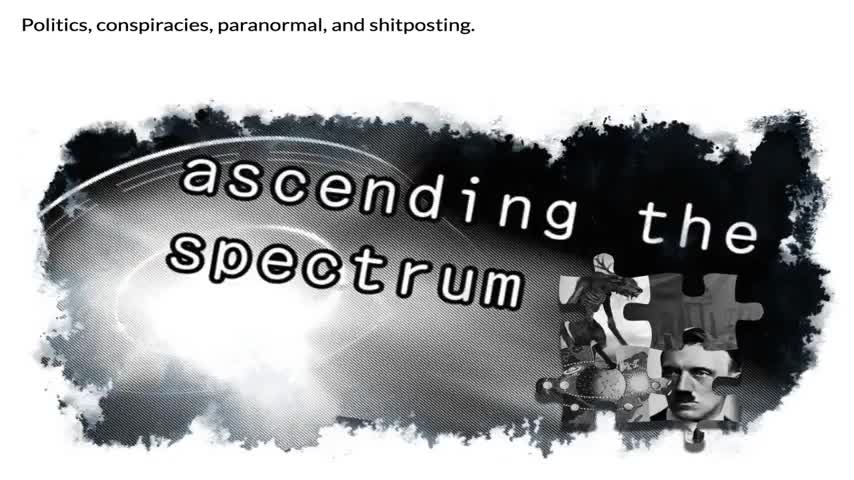
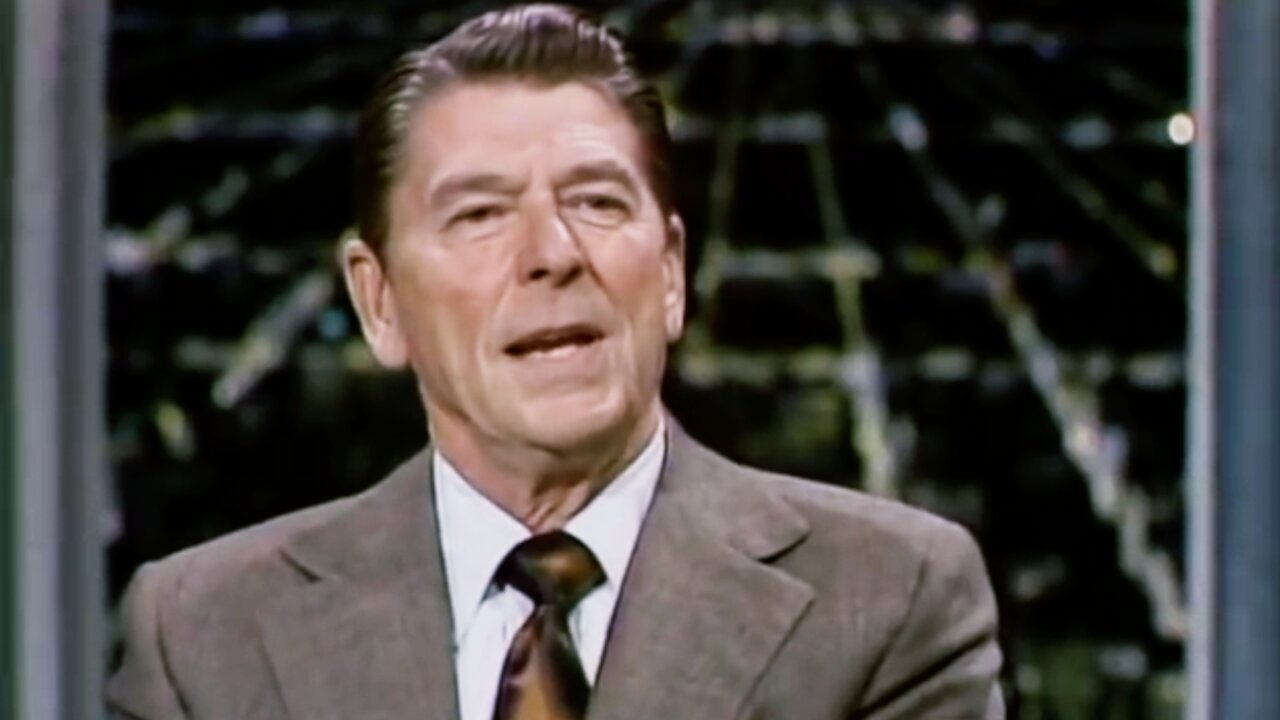
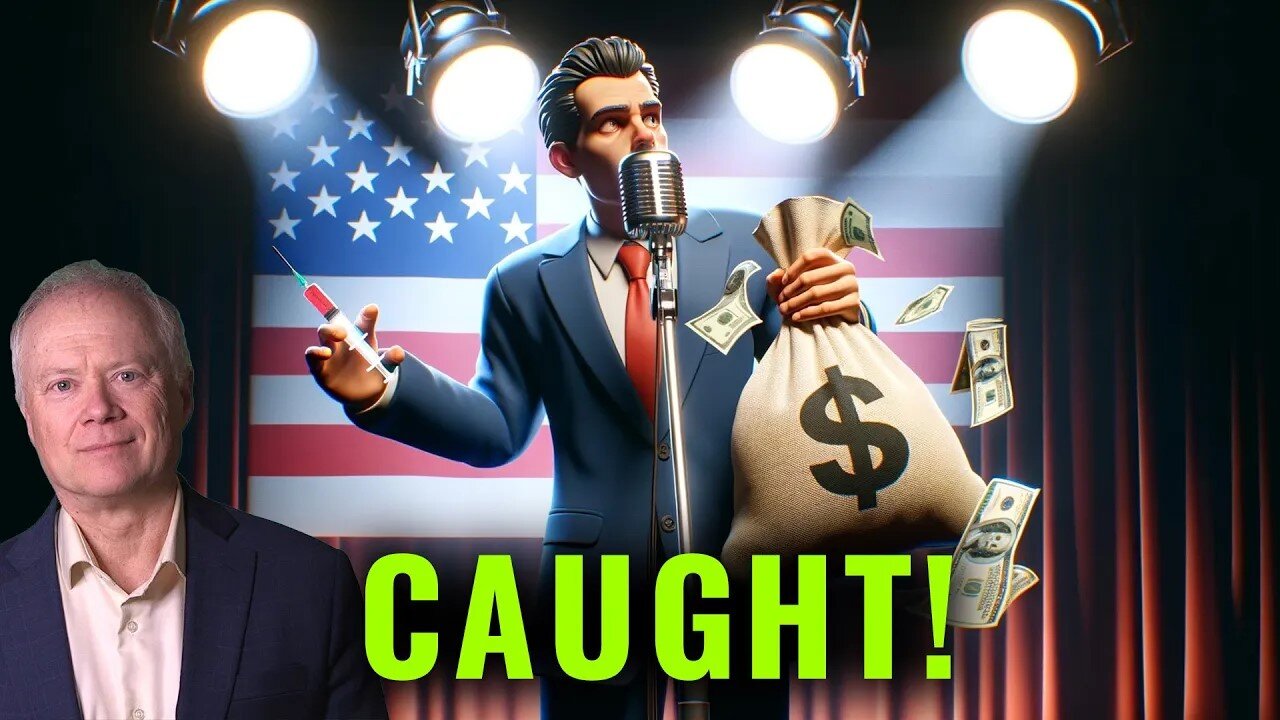



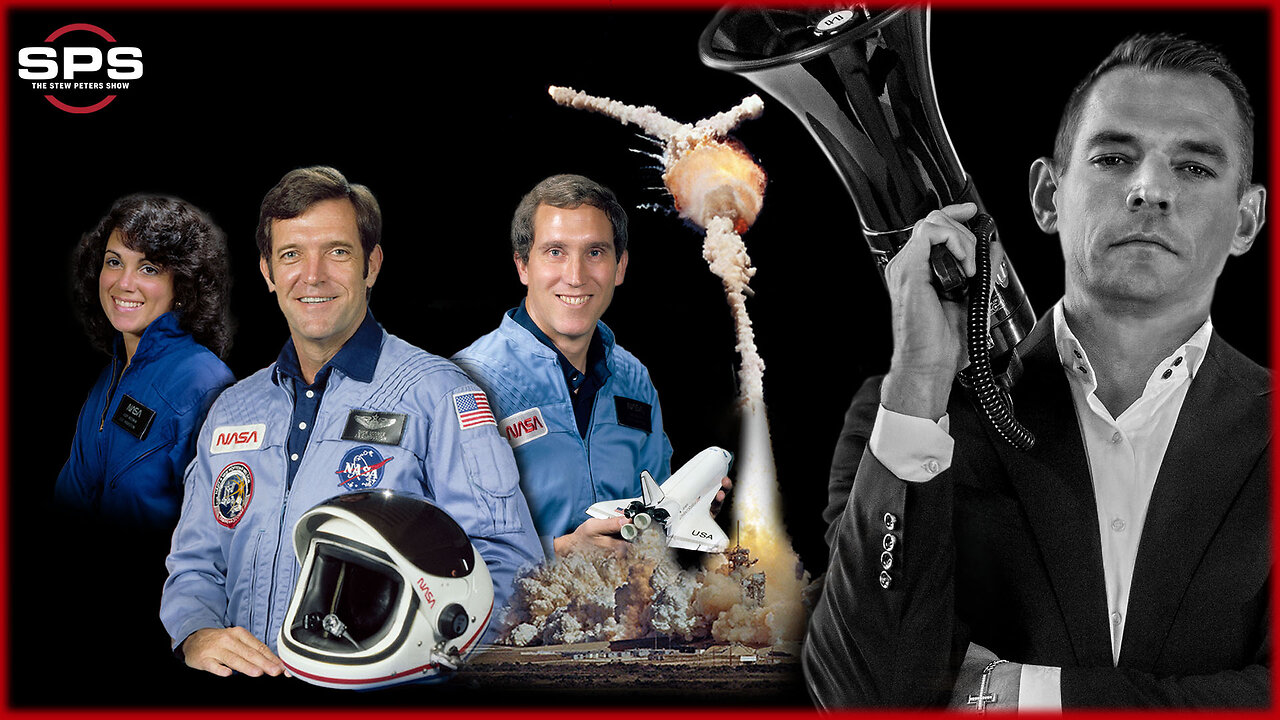

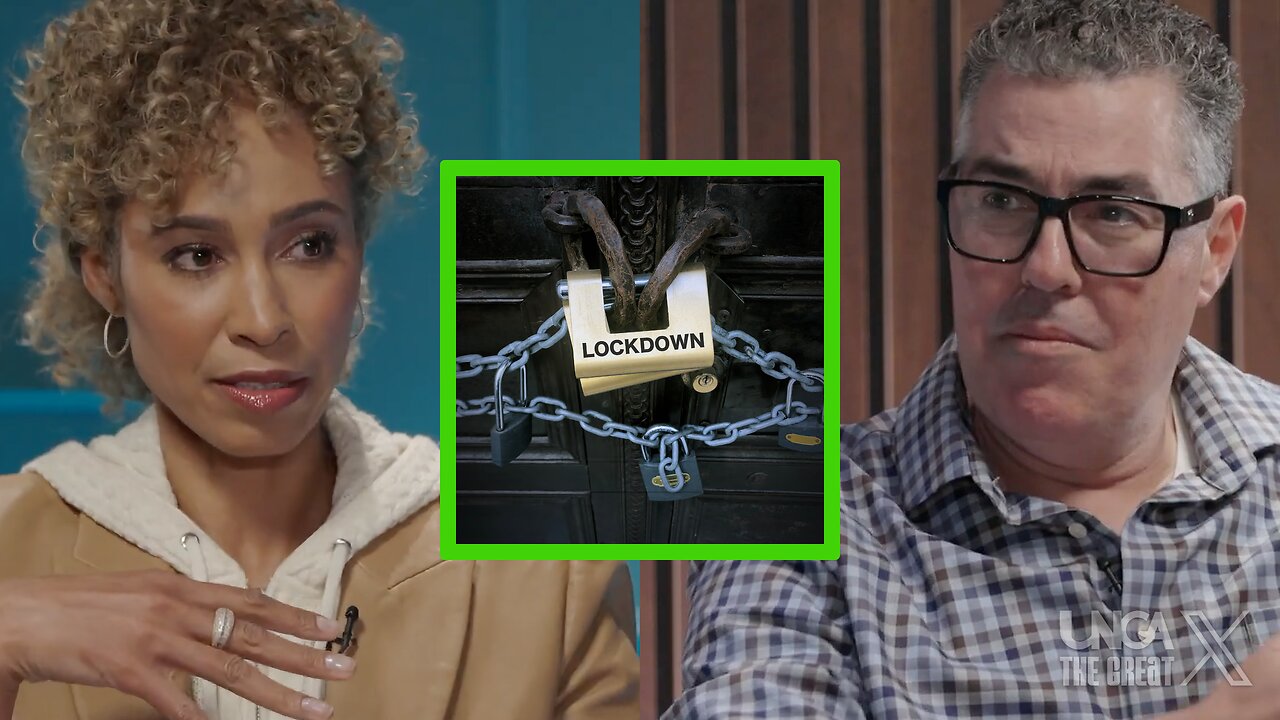
![Ep 3380a - Climate Hoax Has Failed, [CB]/Yellen Panics Over Tariffs, Set The Stage](https://hugh.cdn.rumble.cloud/s/s8/1/j/3/r/p/j3rps.qR4e-small-Ep.-3380b-Election-Event-Th.jpg)



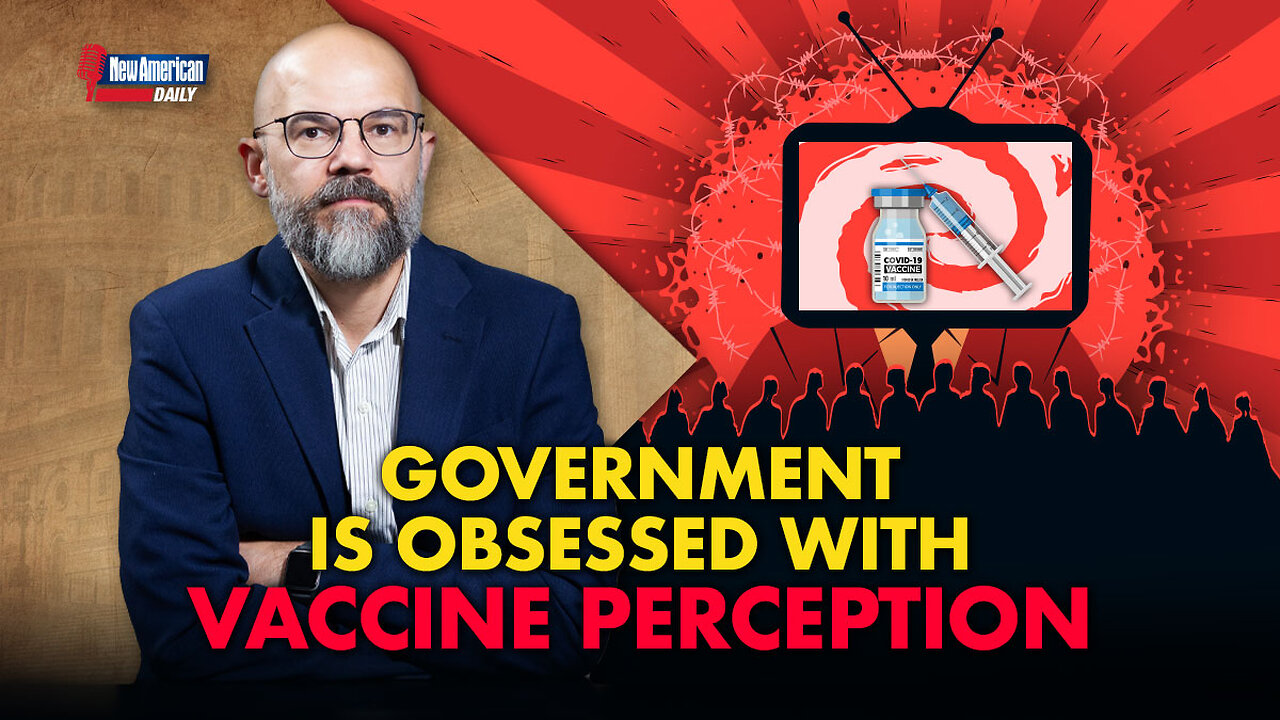
![Ep. 3389a - All Climate Predictions Have Not Come True, Banks Pass [CB] Fake Stress Test](https://hugh.cdn.rumble.cloud/s/s8/1/H/G/2/B/HG2Bs.qR4e-small-Ep.-3389a-All-Climate-Predi.jpg)


























